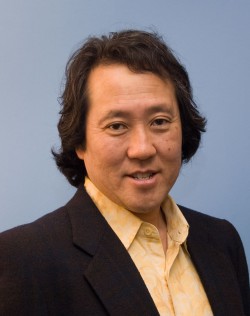UC Santa Cruz electrical engineer Nobuhiko Kobayashi has received a 2012 R&D 100 Award for his role in developing a new system for producing high-tech materials. The awards, presented by R&D Magazine, are known as the "Oscars of Innovation," recognizing the 100 most technologically significant products introduced into the marketplace over the past year.
Kobayashi, an associate professor of electrical engineering in the Baskin School of Engineering and science director of the Advanced Studies Laboratories, helped develop a low-cost plasma processing system called LFRF-501. He worked with collaborators at Structured Materials Industries Inc. and Oak Ridge National Laboratory on the low-cost plasma generator for use in research, development, and production of nanometer-scale materials.
Many new materials are being developed in the form of nanometer-scale structures (a nanometer is one billionth of a meter). Nanoscale materials such as thin films, nanowires, and nanocomposites are enabling new developments in many technologies, including microelectronics, renewable energy, sensors, and LEDs. The LFRF-501 enables production of nanoscale materials at lower temperatures, faster rates, and with enhanced properties compared to other processing systems.
Kobayashi said the LFRF-501 was developed to solve a problem encountered in another project he was working on. "This project required unique semiconductor films containing metallic nanoparticles. We didn't have a way to make this type of material by conventional chemical vapor deposition techniques, so we got together and came up with the system that won this award," he said.
The system consists of a plasma source--an electric circuit that ionizes gas molecules to generate a plasma (ionized gas)--which is coupled with the thin-film deposition equipment. Kobayashi's lab at UC Santa Cruz now has the first of these systems to be built by Structured Materials Industries. He will be using it in his research on thermoelectric devices for converting heat into electricity. Efficient thermoelectric devices could be used to capture waste heat in a wide range of applications.
"We didn't plan to develop a new product, but we had to so we could make the material we needed," Kobayashi said.
The research that led to the LFRF-501 was funded by the U.S. Department of Energy. Kobayashi's work on thermoelectric devices is funded by the Defense Advanced Research Projects Agency (DARPA)/Defense Science Office and the Office of Naval Research.




